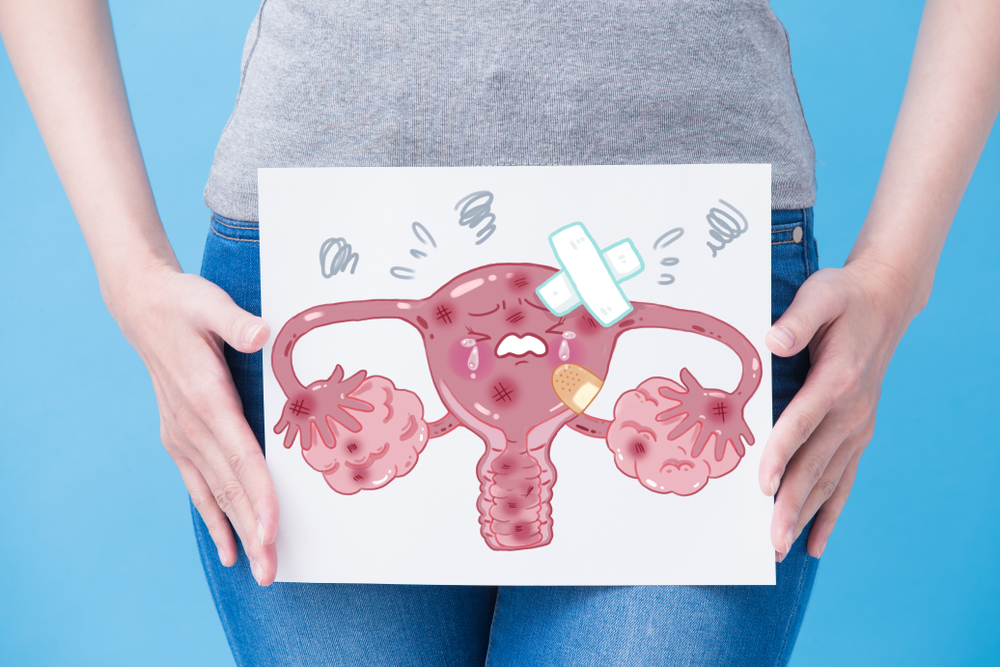As per Global Cancer Statistics 2020, lung cancer was a leading cause of cancer death, with an estimated 1,796,144 new deaths. It was also the second most commonly diagnosed and most frequently occurring cancer worldwide in 2020, with 2,206,771 new cases. It was the leading cause of cancer deaths among men, while for women, it was the leading cancer death following breast cancer.
In Singapore, lung cancer is the third most common cancer in males and females. During 2014 – 2018, 14% of all cancer cases in men were lung cancer cases and 7.5% for women. It is also the leading cause of cancer deaths in Singapore in men at 26.4%, and 15.7% in females.
Symptoms of Lung Cancer - What are the 1st signs?
Early symptoms of lung cancer include:
- Coughing that does not improve over time
- Hoarseness
- Blood in phlegm or sputum is expelled by coughing
- General Weakness
- Wheezing
- Chest pain that worsens with laugh or cough
Advanced symptoms are:
- Persistent coughing
- Shortness of breath
- Wheezing
- Chest Pain
- Fatigue
- Unintentional weight loss
- WIth metastasis, other signs may include bone pain, headache, muscle weakness or eye drooping.
Types of Lung Cancer
Lung Cancer has two subtypes:
- Non-small cell lung cancer (NSCLC) is the most common type (about 80-85%) and usually grows and spreads more slowly than the small cell type. It begins in the epithelial cells and is further distinguished as :
-
- Adenocarcinoma often grows near the lung periphery, in the cells that would typically secrete mucus and may vary in size and growth rate; the most common subtype of lung cancers. It is found in both smokers and non-smokers.
- Squamous cell carcinoma starts in the squamous cells that are flat cells lining the airways in the lungs. This is often linked to a history of smoking and tends to be found in the central part of the lungs, near the bronchus (main airway of the respiration).
- Large cell (Undifferentiated) carcinoma can occur anyway in the lungs and tends to grow and spread quickly, making it harder to treat. A subtype is large cell neuroendocrine carcinoma and is also fast-growing cancer.
- Small cell lung cancer (SCLC): Less common type accounting for about 15% of all lung cancers. This also is rapidly growing than NSCLC and is usually found when the cancer is advanced. It is also sometimes called Oat Cell Cancer. Chemotherapy or radiation therapy is the most preferred option due to its fast growth. However, recurrence is common in this type.
Causes & Risk Factors
- Smoking: 90% of lung cancer is known to be due to smoking. Tobacco causes damage to the lung tissues. The earlier one starts to smoke puts the high risk of developing lung cancer. A passive smoker is also at risk of developing lung cancer due to inhalation of the smoke.
- Radon exposure: Radon is a naturally existing radioactive gas. It could enter buildings through small cracks.
- Asbestos exposure: Mesothelioma is a type of lung cancer that is caused due to asbestos exposure.
- Inherited genetic mutations: Some people have inherited genes that could put them at risk of developing lung cancer.
- Exposure to other substances: Arsenic, cadmium, chromium, nickel, uranium and some petroleum products are also known to be carcinogens(cancer-causing agents).
Other risk factors are family history of lung cancer, exposure to radiation therapy to the chest and using beta-carotene supplements by smokers.
Stages of Lung Cancer
3 stages of lung cancer are broadly identified as below-
- Localized: Cancer is confined to the lungs only.
- Regional: Cancer spreads to lymph nodes(or glands) within the chest.
- Distant: Metastasis of cancer is found in other body parts than just the chest.
Furthermore, 4 main stages in NSCLC type are:
- Stage 1: Cancer present only in lungs
- Stage 2: Cancer in the lungs and nearby lymph nodes
- Stage 3: Cancer in the lungs and lymph nodes in the middle of the chest
- Stage 3A: Cancer found in lymph nodes but only on the same side of the chest where it first grows
- Stage 3B: Cancer found in lymph nodes on opposite sides of the chest or the lymph nodes above the collarbone.
- Stage 4: Cancer has spread to both lungs, areas around the lungs, and maybe to the distant organs.
SCLC has 2 main stages:
- Limited: Cancer is found in only one chest or nearby lymph nodes on the same side of the chest.
- Extensive: Cancer spread will be found throughout the lung, to the opposite lung, to the lymph nodes on the opposite side, to fluid around the lung, bone marrow, and distant organs.
Most of the patients would be in extensive-stage at the time of diagnosis.
Complications of Lung Cancer
- Shortness of breath: It is particularly experienced when cancer grows back to block major airways. Lung cancer also causes fluid accumulation in the lungs, making it harder for the lungs to expand fully during inhalation.
- Coughing up blood: Bleeding in airways (Hemoptysis) happens in most cases of lung cancer.
- Pain: Chest pain is a common feature. Bone pain is felt in metastasised cases.
- Pleural Effusion: Accumulation of fluid in the chest cavity in the space surrounding the lungs is called Pleural Effusion and causes shortness of breath as the lungs to find it harder to expand in the presence of fluid in the cavity. Drainage of fluid is the treatment option for pleural effusion.
- Metastasis: The spread of cancer to other body parts, such as the brain or bones, is harder to cure.
Diagnosis
The most common diagnostic tests used are:
- Imaging tests: A chest X-ray can reveal an abnormal mass, while a CT scan of chest lesions is not visible on the x-ray.
- Sputum cytology: A microscopic examination of one’s sputum can show the presence of lung cancer cells.
- Biopsy: A tissue sample is collected from the affected part of the lungs. It can be obtained either by Bronchoscopy (tissue collected from bronchus, the major airway, bypassing the lighted tube into one’s throat), Mediastinoscopy (tissue collected from lymph nodes by making an incision at the base of one’s neck) or Needle biopsy (the affected lung tissue is collected by using X-ray or CT image to guide the needle through chest wall).
Treatment
Treatment options depend on the type of cancer and the extent of cancer spread.
- Surgery: Involves removal of the affected part of the lung. Different surgical options are-
- Wedge resection: Removal of a small section of lung tumour and a margin of the healthy tissue.
- Segmental resection: Removal of larger affected lung tissue but not the entire lobe.
- Lobectomy: Removal of the entire lobe of one lung.
- Pneumonectomy: Removal of an entire lung.
- Radiation therapy: Uses high-powered energy beams from X-rays or protons to kill cancer cells. For advanced cases, radiation may be used before or after surgery. It can also be combined with chemotherapy, particularly when surgery is not a primary option owing to health risks in some patients.
- Chemotherapy: Drugs that kill cancer cells are administered either via veins or orally. The doctor may use a combination of chemo drugs for recovery. Chemotherapy may be used before surgery to shrink cancers to make them easier to remove during surgery.
- Targeted drug therapy: Specific abnormalities of the cancer cells are targeted with drugs that block them. It particularly works in those who have cancer due to genetic mutations.
- Immunotherapy: Uses one’s own body’s immune system to fight off the cancer cells.
Further, treatment is decided based on the cancer type. For example, non-small cell lung cancer (NSCLC) treatment varies from person to person, depending on one’s health status.
- Stage 1 NSCLC: Segmental resection to remove a portion of the affected lung. Chemotherapy may also be recommended, especially if one is at high risk of recurrence.
- Stage 2 NSCLC: Surgery to remove a part or all of your lung along with Chemotherapy is usually recommended.
- Stage 3 NSCLC: A combination of chemotherapy, surgery, and radiation treatment is recommended.
- Stage 4 NSCLC: Hard to cure. Options include surgery, radiation, chemotherapy, targeted therapy, and immunotherapy.
Options for small cell lung cancer (NSCLC) also include surgery, chemotherapy, and radiation therapy. In most cases, cancer will be too advanced for surgery.
Prevention
3 screening tests are available to screen for lung cancer which helps in early detection, sometimes even before having symptoms. They are:
- Low-dose computed tomography(LDCT)/Spiral scan/Helical scan: Uses low-dose radiation to make a series of imaging of the body using an X-ray machine that scans the body in a spiral path. Screening with LDCT has shown a decreased risk of dying from lung cancer in current or former heavy smokers. In addition, the National Lung screening trial conducted in the US showed that screening once in 3 years with LDCT was effective at detecting early-stage lung cancers.
- Chest X-ray: An X-ray beam is used to film the interior organs of the chest, like lungs, to find abnormal masses.
- Sputum cytology: A sample of sputum is coughed up and tested microscopically for the presence of cancer cells.
Avoiding the risk factors helps hugely in the prevention of lung cancer. They include refraining from active and passive smoking, making sure your home is not located in an area exposed to Radon, avoiding carcinogens at work, consuming a healthy diet enriched with fruits and vegetables, staying active and exercising regularly can help prevent obesity.
There is no evidence showing a certain food being exclusive of lung cancer. However, foods like red meat, processed meat & heavy alcohol could increase one’s risk of developing lung cancer. In addition, a high intake of processed sugar is also known to be a predisposing cause of obesity that indirectly increases one’s risk of developing cancer.
On the contrary, a plant-based diet high in fresh fruits & vegetables and whole-grain reduces the chances of developing cancer. They are high in antioxidants, particularly berries, dark-green vegetables, oats and fish.
FAQs
The 5-year survival rate for all types of lung cancer is 21%. For men, it is 17%, and for women, it is 24%. However, for the NSCLC type, the survival rate is estimated to be 25% and 7% for the small cell lung cancer type.
The self-testing method is not an available option. However, looking out for early symptoms and getting screened for lung cancer, particularly when at risk, can help one detect lung cancer at an early stage.
Unlike other cancers, lung cancer usually has no noticeable symptoms until it is in an advanced stage. It takes several years for cancer to develop in the lungs.
- 1Mayo Clinic
- 2American Cancer Society
- 3Healthline
- 4Cleveland Clinic
- 5Medline Plus
- 6CDC
- 7American Lung Association
- 8Medicine Net
- 9National Cancer Institute
- 10Cancer.Net
- 11Singapore Cancer Society





